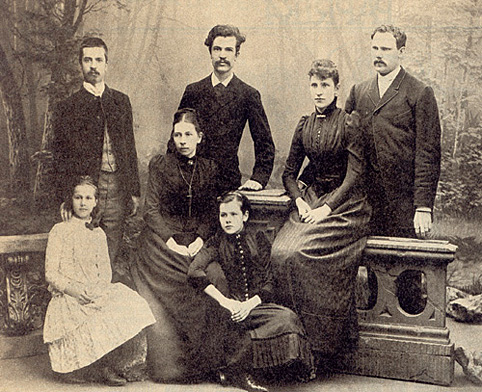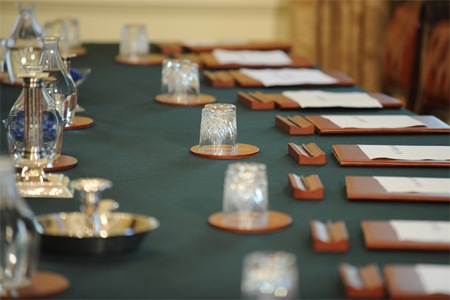|
Eemil Nestor Setälä
Eemil Nestor Setälä (; 27 February 1864 – 8 February 1935) was a Finnish politician and once the Chairman of the Senate of Finland, from September 1917 to November 1917, when he was author of the Finnish Declaration of Independence. Setälä was a linguist, professor of Finnish language and literature at Helsinki University from 1893 to 1929. He was a major influence on the study of Finnish language, and the founder of the research institute '' Suomen suku'' ("The Family of the Finnish Language"). Life Setälä was born in 1864. In 1892 he married the writer and editor, Helmi Krohn, and she took the name Setälä which she used until they divorced in 1913. A divorce was unusual at this time in Finland. Architect and writer Salme Setälä was their daughter. His political activities led him to be elected several times to the parliament, for the Young Finnish Party and for the National Coalition Party. For a brief period at the end of World War I, he served as act ... [...More Info...] [...Related Items...] OR: [Wikipedia] [Google] [Baidu] |
Valtioneuvos
Valtioneuvos ( Finnish for “counsellor of state”, sv, statsråd) is a Finnish title of honor awarded by the President of Finland to elder statesmen. It is one of two titles (the other being vuorineuvos) in the highest class of State of Finland honors. A tax on the titles of 48,400 euros or 12,100 euros must be paid by whoever proposes the title to a holder. Some former Social Democratic prime ministers such as Rafael Paasio, Kalevi Sorsa and Paavo Lipponen Paavo Tapio Lipponen (; born 23 April 1941) is a Finnish politician and former reporter. He was Prime Minister of Finland from 1995 to 2003, and Chairman of the Social Democratic Party of Finland from 1993 to 2005. He also served as Speaker of t ... all declined the honor when it was offered to them. Lipponen commented that no one outside Finland knows what valtioneuvos is, and that he is satisfied with "former Prime Minister". Title holders References {{reflist Honorary titles Finnish culture ... [...More Info...] [...Related Items...] OR: [Wikipedia] [Google] [Baidu] |
Research Institute
A research institute, research centre, research center or research organization, is an establishment founded for doing research. Research institutes may specialize in basic research or may be oriented to applied research. Although the term often implies natural science research, there are also many research institutes in the social science as well, especially for sociological and historical research purposes. Famous research institutes In the early medieval period, several astronomical observatories were built in the Islamic world. The first of these was the 9th-century Baghdad observatory built during the time of the Abbasid caliph al-Ma'mun, though the most famous were the 13th-century Maragheh observatory, and the 15th-century Ulugh Beg Observatory. The Kerala School of Astronomy and Mathematics was a school of mathematics and astronomy founded by Madhava of Sangamagrama in Kerala, India. The school flourished between the 14th and 16th centuries and the original disc ... [...More Info...] [...Related Items...] OR: [Wikipedia] [Google] [Baidu] |
Hungary
Hungary ( hu, Magyarország ) is a landlocked country in Central Europe. Spanning of the Carpathian Basin, it is bordered by Slovakia to the north, Ukraine to the northeast, Romania to the east and southeast, Serbia to the south, Croatia and Slovenia to the southwest, and Austria to the west. Hungary has a population of nearly 9 million, mostly ethnic Hungarians and a significant Romani minority. Hungarian, the official language, is the world's most widely spoken Uralic language and among the few non- Indo-European languages widely spoken in Europe. Budapest is the country's capital and largest city; other major urban areas include Debrecen, Szeged, Miskolc, Pécs, and Győr. The territory of present-day Hungary has for centuries been a crossroads for various peoples, including Celts, Romans, Germanic tribes, Huns, West Slavs and the Avars. The foundation of the Hungarian state was established in the late 9th century AD with the conquest of the Carpat ... [...More Info...] [...Related Items...] OR: [Wikipedia] [Google] [Baidu] |
Denmark
) , song = ( en, "King Christian stood by the lofty mast") , song_type = National and royal anthem , image_map = EU-Denmark.svg , map_caption = , subdivision_type = Sovereign state , subdivision_name = Kingdom of Denmark , established_title = Consolidation , established_date = 8th century , established_title2 = Christianization , established_date2 = 965 , established_title3 = , established_date3 = 5 June 1849 , established_title4 = Faroese home rule , established_date4 = 24 March 1948 , established_title5 = EEC accession , established_date5 = 1 January 1973 , established_title6 = Greenlandic home rule , established_date6 = 1 May 1979 , official_languages = Danish , languages_type = Regional languages , languages_sub = yes , languages = GermanGerman is recognised as a protected minority language in the South Jutland area of Denmark. , demonym = , capital = Copenhagen , largest_city = capital , coordinates = , ethnic_groups = , ethnic_gro ... [...More Info...] [...Related Items...] OR: [Wikipedia] [Google] [Baidu] |
Envoy (title)
An envoy extraordinary and minister plenipotentiary, usually known as a minister, was a diplomatic head of mission who was ranked below ambassador. A diplomatic mission headed by an envoy was known as a legation rather than an embassy. Under the system of diplomatic ranks established by the Congress of Vienna (1815), an envoy was a diplomat of the second class who had plenipotentiary powers, i.e., full authority to represent the government. However, envoys did not serve as the personal representative of their country's head of state. Until the first decades of the 20th century, most diplomatic missions were legations headed by diplomats of the envoy rank. Ambassadors were only exchanged between great powers, close allies, and related monarchies. After World War II it was no longer considered acceptable to treat some nations as inferior to others, given the United Nations doctrine of equality of sovereign states. The rank of envoy gradually became obsolete as countries upgraded ... [...More Info...] [...Related Items...] OR: [Wikipedia] [Google] [Baidu] |
Minister For Foreign Affairs (Finland)
The minister for foreign affairs (, ) handles the Finnish Government's foreign policy and relations, and is in charge of the Ministry for Foreign Affairs. The minister for foreign trade and development is also associated with this ministry. The current minister for foreign affairs is Pekka Haavisto of Green League. Constitutional mandate Section 93 (''Competence in the area of foreign policy issues'') of the Constitution of Finland says the following: This last paragraph specifies the constitutional responsibility of the minister for foreign affairs. List of ministers for foreign affairs See also * Sipilä cabinet * Rinne cabinet * Marin cabinet References {{reflist External links Official Site of Ministry for Foreign Affairs of Finland - Foreign relations of Finland Foreign Foreign may refer to: Government * Foreign policy, how a country interacts with other countries * Ministry of Foreign Affairs, in ... [...More Info...] [...Related Items...] OR: [Wikipedia] [Google] [Baidu] |
Cabinet (government)
A cabinet is a body of high-ranking state officials, typically consisting of the executive branch's top leaders. Members of a cabinet are usually called cabinet ministers or secretaries. The function of a cabinet varies: in some countries, it is a collegiate decision-making body with collective responsibility, while in others it may function either as a purely advisory body or an assisting institution to a decision-making head of state or head of government. Cabinets are typically the body responsible for the day-to-day management of the government and response to sudden events, whereas the legislative and judicial branches work in a measured pace, in sessions according to lengthy procedures. In some countries, particularly those that use a parliamentary system (e.g., the UK), the Cabinet collectively decides the government's direction, especially in regard to legislation passed by the parliament. In countries with a presidential system, such as the United States, ... [...More Info...] [...Related Items...] OR: [Wikipedia] [Google] [Baidu] |
World War I
World War I (28 July 1914 11 November 1918), often abbreviated as WWI, was List of wars and anthropogenic disasters by death toll, one of the deadliest global conflicts in history. Belligerents included much of Europe, the Russian Empire, the United States, and the Ottoman Empire, with fighting occurring throughout Europe, the Middle East, Africa, the Pacific Ocean, Pacific, and parts of Asia. An estimated 9 million soldiers were killed in combat, plus another 23 million wounded, while 5 million civilians died as a result of military action, hunger, and disease. Millions more died in Genocides in history (World War I through World War II), genocides within the Ottoman Empire and in the Spanish flu, 1918 influenza pandemic, which was exacerbated by the movement of combatants during the war. Prior to 1914, the European great powers were divided between the Triple Entente (comprising French Third Republic, France, Russia, and British Empire, Britain) and the Triple A ... [...More Info...] [...Related Items...] OR: [Wikipedia] [Google] [Baidu] |
National Coalition Party
The National Coalition Party (NCP; fi, Kansallinen Kokoomus ; '; sv, Samlingspartiet; ') is a Liberal conservatism, liberal-conservative List of political parties in Finland, political party in Finland. Ideologically, the National Coalition Party is positioned on the Centre-right politics, centre-right on the political spectrum, and it has been described as Liberalism, liberal, Conservatism, conservative, Conservative liberalism, conservative-liberal, and Liberal conservatism, liberal-conservative. Founded in 1918, the National Coalition Party is one of the "big three" parties that have dominated Finnish national politics for several decades, along with the Social Democratic Party of Finland, Social Democratic Party and the Centre Party (Finland), Centre Party. The current party chair is Petteri Orpo, elected on 11 June 2016. The party self-statedly bases its politics on "freedom, responsibility and democracy, equal opportunities, education, supportiveness, tolerance and caring" ... [...More Info...] [...Related Items...] OR: [Wikipedia] [Google] [Baidu] |
Young Finnish Party
The Young Finnish Party or Constitutional-Fennoman Party ( fi, Nuorsuomalainen Puolue or ) was a liberal and nationalist political party in the Grand Duchy of Finland. It began as an upper-class reformist movement during the 1870s and formed as a political party in 1894. Background Industrialization and opening of the Finnish economy by Emperor Alexander II gave room for liberal economic thinking. The Young Finns opposed on constitutional basis Russification efforts that commenced during 1899-1905. During that period various political factions joined the movement and they were held together by a common opponent, the autocratic Russian Empire. The movement separated itself from the main Fennoman movement, the Finnish Party due to political competition between two political generations that had differing views on Finland's constitutional status in the Russian Empire. In 1907, after a general strike that finished the first Russification period and brought parliamentary democracy ... [...More Info...] [...Related Items...] OR: [Wikipedia] [Google] [Baidu] |
Salme Setälä
Salme Setälä (from 1919–1930 Cornér; 18 January 1894, Helsinki — 6 October 1980, Helsinki) was a Finnish architect and writer. She graduated from the Helsinki University of Technology in 1917. She worked in a number of architecture offices. In the early 1950s she made several study trips in Europe. After that she was hired in the government office for land-use planning. She planned the land use for over 30 areas in Finland. Setälä's main interest was interior design and furniture. She also wrote books, both fiction and non-fiction. Her parents were Eemil Nestor Setälä and Helmi Krohn, and she was of Baltic German descent through her maternal grandfather Julius Krohn Julius Leopold Fredrik Krohn (19 April 1835 – 28 August 1888) was a Finnish folk poetry researcher, professor of Finnish literature, poet, hymn writer, translator and journalist. He was born in Viipuri and was of Baltic German origin. Krohn wo .... From 1919–1930 she was married to the journalist Frit ... [...More Info...] [...Related Items...] OR: [Wikipedia] [Google] [Baidu] |

.jpg)

.jpg)
